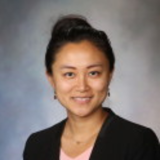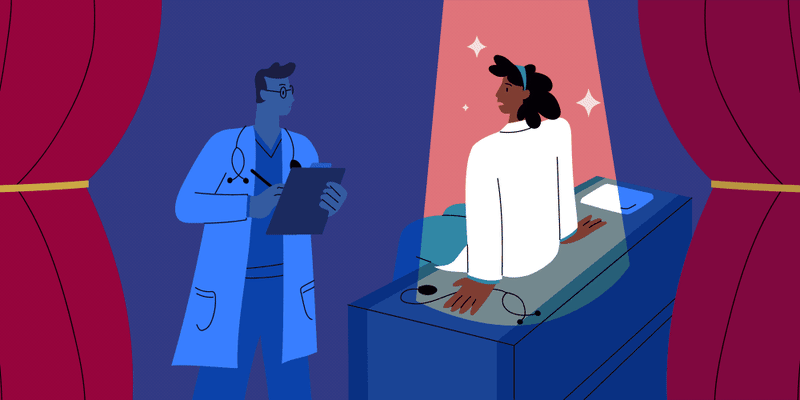My relationship with medicine is much like my relationship with writing: a decade-long sequence of starts and stops that feel Sisyphean but are occasionally punctuated by moments that make it worthwhile. My most effective find while looking for writing advice recently was Julia Cameron’s “artist dates,” which she describes as a “once weekly, festive, solo expedition to explore something that interests you.” It is the equivalent of an individual playdate, a way of letting the inner child out to follow curiosity with no 9-to-5 adult agenda. I took my inner child to art exhibits, plays, and hikes. Despite my healthy dose of skepticism, I found myself writing more, surprised by the synapses disparate parts of my brain seemed to connect for ideas.
If “artist dates” could improve my writing, I wondered what an equivalent in medicine could do. Learning during residency has been such a linear, goal-oriented process that even trying to experience a state of flow within my day-to-day required deliberate effort and experimentation. Could I recall a time I let my curiosity wander without direction? When was the last time I thought medicine was just pure fun? I decided to use the scientific method of extrapolation and try some “medicine dates” with a few ground rules: The activity had to be something I was curious or excited about, related to medicine in some way, regularly scheduled, and done solo.
Date 1: Pondering Rabid Hydrophobia Along Lake Merritt
I have always lived near a body of water. Placid, sun-soaked, southern California beaches, a Merlion spouting water into the Singapore Strait, the land of a thousand lakes. The shores of Oakland’s Lake Merritt seemed like the perfect setting to couple a Saturday morning stroll with the audiobook of Rabid: A Cultural History of the World’s Most Diabolical Virus. I had somehow forgotten about the virus’ pathognomonic hydrophobia. Historical descriptions of this biologically bizarre revulsion to even the thought of water made me grateful for my ability to lose the chatter of my mind in the speckles of light that flickered across the lake like an impressionist painting. How can a microscopic bullet-shaped particle take away one of the most basic human affinities?
The audiobook did not tell me, and as it dove deeper into accounts of rabies in ayurvedic texts, half a chapter passed by before I realized my mind was a little too meditative to pay attention. I gave up, walked to a local bakery for rosemary walnut bread and asparagus soup, and picnicked on the grass. Fit runners and young parents with strollers passed by, oblivious to my relief at being able to drink soup and gaze across the shores without the weight of a virus that has plagued historical memory for thousands of years. I spent half an hour on UpToDate’s rabies page. The other half I spent imagining a parallel universe where I chased and banished viruses with as much glamor as an infectious diseases version of Lara Croft.
Date 2: Sensing Science at San Francisco’s Eye Museum
I didn’t love any body part enough to dedicate my entire professional life to it, but if I had to pick one, it would be the eyes. Which other organ gets analogies as evocative as “window to the soul”? The weekend after my rabies foray, I decided to visit the American Academy of Ophthalmology’s Truhlsen-Marmor Museum of the Eye while wandering the northern edges of San Francisco.
I had the small ground-floor museum almost entirely to myself. The airy rooms were filled with anatomic models, hands-on demonstrations of visual concepts underpinning optical illusions, and displays of historical glasses and gadgets. When I learned that the eye synthesizes and filters 120 million inputs into 1 million to send to the brain through the optic nerve, my curiosity overcame my insularity enough to ask how this natural processing happens. The docent told me about the prioritization of movement, borders, and the center. Our conversation meandered to its application in visual arts and eventually landed on Monet, Caravaggio, and chiaroscuro. She let me try on a table of 19th century eyepieces. I felt like a sixth-grader on a field trip with a teacher who loved science and wanted me to love it too.
A sample size of two is too small to draw any conclusions. What I can say is that like the handful of people who know me well enough to see my five-year-old self through the cracks of my 30-going-on-60 shell, these excursions offered my first glimpse into the playful side of a field saturated with inherent gravity and heaviness.
Clinical medicine is overwhelmingly goal-directed. This attribute, which generally makes for neat lists, algorithms, and directions, can also be a recipe for eventual boredom. Having fun requires at least a small relaxation of routine. For me, enjoyment was most likely when 1) I possessed the autonomy to choose an activity with an element of novelty, 2) I was allowed but not forced to learn, and 3) I had space to follow natural curiosities. If this is absent from my training or practice, then I should carve it out for myself, whether through “medicine dates” or concepts like gamification. Ultimately, the field of medicine still values the currency of ideas, which means that cultivating wonder and nourishing creativity matters.
When I opted for medicine instead of art school, I thought I was choosing to be a responsible, altruistic, checklist-oriented adult. I am just beginning to realize that even in this version of myself, there remains a child who can still play with inquisitiveness, delight in mysteries, and explore without fear of getting lost. Life is a little more interesting when I can see that side of her. Maybe next week we can peruse the local bookstore for a random medicine-related read or listen to Duke Divinity School’s series on theology and psychiatric medications in a quirky cafe. If it’s anything like my “artist dates,” maybe I will be a slightly better physician for it.
What activity would you do on a “medicine date”? How do you foster fun and play in your practice?
Joy Liu is an internal medicine resident in northern California interested in end-of-life care, global health, and public policy. She is a graduate of the Mayo Clinic Alix School of Medicine and Duke University. She is a 2021–2022 Doximity Op-Med Fellow.
Illustration by Joy Liu







